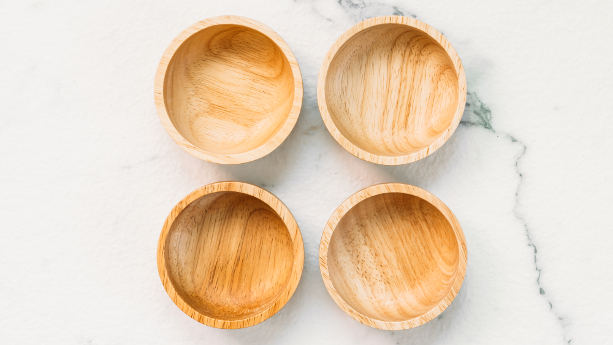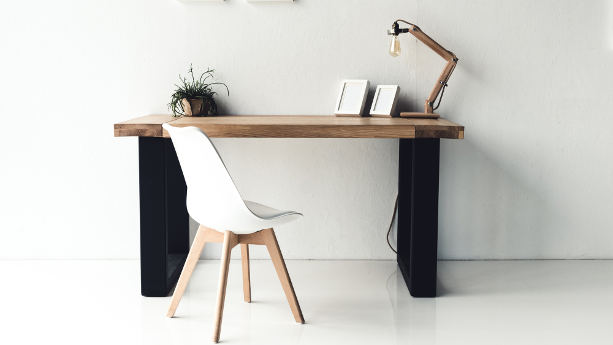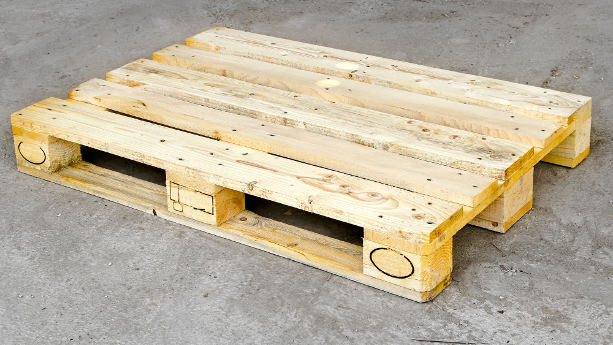Content Overview

FREE CONSULTATION CALL (US, EU & UK)
- Request a free 30-minute call with Ivan Malloci to learn how we can help you with:
- Find product requirements
- Certification and labeling
- Lab testing
Wooden Handicrafts
Wooden handicrafts products imported from China are regulated by the United States Department of Agriculture Animal and Plant Health Inspection Service (USDA APHIS) in the United States. Here are some examples of products that are considered wooden handicrafts.
- Baskets
- Birdhouse
- Boxes
- Picture frames
- Pencils
- Wooden furniture
- Other items composed of wood
You find more examples on the USDA APHIS’s website.

Approved Suppliers (China)
The first step for importing wooden handicraft products from China is to check the APHIS list of approved wooden handicraft manufacturers.
Note that manufacturers are not considered approved until they have been added to the list. The list is maintained by the government of China as part of an agreement with the United States. Here are some examples of approved manufacturers
- Guangzhou Nanfang furniture
- Linyi Zhaoxing Arts and Crafts
- Crownwell (Heyuan)
Facility Requirements
Approved manufacturers should produce wooden handicrafts according to specifications that have been agreed upon by the US and China. This includes requirements such as:
- Heat treatment
- Quarantine
- Quality management (e.g. traceability system)
- Cleanness of the production area
Other countries
APHIS does not provide detailed information for non-Chinese wooden handicrafts suppliers. Importers are recommended to contact APHIS directly when importing wooden handicrafts from other countries, such as Vietnam and India.
Pre-Import Approvals
Once you have confirmed if the supplier is on the USDA APHIS list, you may apply for an import permit, via the eFile system. During the application procedure, you might need to provide information such as the following:
- Product category
- Registered number of the manufacturer
- Personal contact
- Quantity of the goods

Lacey Act
The Lacey Act (16 U.S.C. Section 3371-3378) protects plants, plant products, and wildlife animals, by prohibiting anyone to import items that are illegally harvested or hunted, or made of materials illegally harvested. The Lacey Act also makes it unlawful to import certain products without a declaration.
Product Scope
Here you find a list of products that are covered by the Lacey Act, including:
- Plywood, veneered panels
- Wooden frames
- Seats with wood frames
- Articles for billiards
Lacey Act Declaration
Importers of wooden products that are covered by the Lacey Act should submit a Lacey Act Declaration to the US Department of Agriculture (USDA) through the LAWGS data system.
If the plant products you plan to import to the United States fulfill each one of the following criteria, you are required to submit a Lacey Act Declaration:
a. The product contains plant materials
b. The product is classified under a Harmonized Tariff Schedule (HTS) code listed on APHIS’ Implementation Schedule
c. The shipment is imported to the United States as a formal entry
d. The shipment falls under either one of the entry type codes in this table (e.g. Consumption – Free and Dutiable)
Importers of covered plant products should provide information such as the following in their declaration:
- The scientific name of the plant(s)
- Country of harvest
- Product value
- Quantity of plant material in the shipment in metric units of measure
- Importer’s name, contact information, address
- Consignee names and address
- HTSUS Code
- Manufacturer Identification Code (MID)
- Bill of lading
- Container number
- Shipment description
Due Care Practice
Companies that trade plant products in the United States should exercise “due care practice”, meaning that they should take measures to ensure that the products they are selling are not made from illegally harvested woods.
As for now, the Lacey Act does not provide a definition for “due care practice”. Importers can use third-party verification schemes, such as the FSC programs, or SGS’s Wood & Wood Fiber Product Due Diligence Systems to facilitate the implementation of the due care practice and make sure that their products are sourced from legally harvested woods.
Wooden Furniture
Importers and manufacturers of wooden furniture should comply with applicable regulations and standards, such as CPSC safety standards, or ASTM standards.
Product Scope
Here are some examples of wooden furniture that are covered by one or more wooden furniture standards or regulations:
- Wooden table sets
- Wooden bunk beds
- Wooden cradle
- Wooden cabinets
- Wooden chests
- Wooden upholstered furniture
CPSC Standards
Below are some Consumer Product Safety Commission (CPSC ) standards that are directly or indirectly related to wooden furniture.
16 CFR Part 1640 – Standard for the Flammability of Upholstered Furniture
16 CFR Part 1640 is a standard regarding the flammability requirements of the upholstered furniture. It adopted the requirements from the California Technical Bulletin 117-2013, which is a fire safety standard for upholstered furniture implemented in California.
It establishes flammability test methods and labeling requirements for upholstered furniture.
16 CFR Part 1213 – Safety Standard for Entrapment Hazards in Bunk Beds
16 CFR Part 1213 is a safety standard for entrapment hazards in bunk beds. This standard prescribes requirements for bunk beds in order to reduce the hazards relating to children’s injury or death caused by the guardrails or other structures of the bed.
It sets out the construction requirements for the guardrails and bed end structures of the bunk beds. These requirements include:
a. a bunk bed shall have at least two guardrails, at least one on each side of the bed. The underside of each bed’s foundation should have at least 30 inches (760 mm) above the floor.
b. One guardrail shall be continuous between each of the bed’s end structures. This means that any gap between the guardrail and end structure must not exceed 5.6 mm. This is to avoid causing a finger entrapment hazard for a child.
c. The other guardrail could terminate before reaching the bed’s end structures when there is no more than 380 mm between either end of the guardrail and the nearest bed end structures.
Note that this is not an inclusive list of the requirements. Please visit the Code of Federal Regulations to learn more.
ASTM Standards
ASTM standards are voluntary standards (unless incorporated within federal or state regulations). Importers or manufacturers can refer to applicable ASTM standards for their products, in order to improve safety and performance. Here are some examples of ASTM standards that apply to wooden furniture:
a. ASTM F1427 – Standard Consumer Safety Specification For Bunk Beds
b. ASTM F2388 – Standard Consumer Safety Specification For Baby Changing Tables For Domestic Use
c. ASTM F2057 – Standard Safety Specification for Clothing Storage Units
NFPA Furniture Safety Standards
The National Fire Protection Association (NFPA) is a nonprofit organization in the United States that aims to raise public awareness of fire hazards. It has been developing voluntary safety standards for furniture, construction products, and electric appliances. Importers or manufacturers of furniture can refer to relevant NFPA standards to assess the safety of their products.
Here are some examples of NFPA’s furniture safety standards:
a. NFPA 260 Standard Methods of Tests and Classification System for Cigarette Ignition Resistance of Components of Upholstered Furniture
b. NFPA 261 Standard Method of Test for Determining Resistance of Mock-Up Upholstered Furniture Material Assemblies to Ignition by Smoldering Cigarettes
c. NFPA 266 Standard Method of Test for Fire Characteristics of Upholstered Furniture Exposed to Flaming Ignition Source
d. NFPA 272 Standard Method of Test for Heat and Visible Smoke Release Rates for Upholstered Furniture Components or Composites and Mattresses Using an Oxygen Consumption Calorimeter
US Law Label
The US Law Label covers upholstered furniture and bedding products sold in the United States. The requirements mainly concern the labeling of the covered products. The label information must reflect the exact composition of the filling materials.
For example, if an upholstered sofa is made of 90% of polyurethane foam and 10% blended cotton fell 10%, its label should indicate this information and be written like: 90% Polyurethane Foam, 10% Blended Cotton Felt.
TSCA: Formaldehyde Standards for Composite Wood Products (40 CFR Section 770)
The Toxic Substances Chemical Act Title VI 40 CFR Section 770 sets out rules for the Formaldehyde Emission Standards of Composite Wood Products that are manufactured, imported and sold in the United States.
It specifies the emission limits for different types of composite wood products and requires that covered products must be tested against the following ASTM standards:
a. ASTM E1333-14 Standard – Test Method for Determining Formaldehyde Concentrations in Air and Emission Rates from Wood Products Using a Large Chamber
b. ASTM E 1333-96 Standard – Test Method for Determining Formaldehyde Concentrations in Air and Emission Rates from Wood Products
It also specifies certification requirements.
Product Scope
Here are some examples of products that are covered by this part:
- Hardwood plywood
- Medium-density fiberboards
- Particleboards
- Veneer
- Lumber
- Laminated products
Certification
Section 770.15 requires that importers of composite wood products must obtain product certification for their products before they are allowed to sell in the United States. The importers must apply to a Third-Party Certifier (TPC) recognized by the EPA in accordance with the TSCA Title VI.
The importer must submit the following information to an EPA-recognized TPC:
a. The panel producer’s contact information, including name, address, and telephone number
b. Panel producer’s quality control manual as required by Section 770.21(a)
c. Name and contact information for the panel producer’s quality control manager
d. An identification of the specific products for which certification is requested, and the resin system used in panel production
e. Test reports pursuant to the ASTM E1333-14 or ASTM D6007-14
Additional information might be required. You can learn more here.

Wooden Packaging Materials
Wooden packaging materials, just like other wooden products, must also comply with the applicable regulations or standards, including fumigation or heat treatment prior to being imported into the United States.
Heat Treatment & Fumigation
According to the USDA APHIS, wooden packaging materials are subjected to subject to phytosanitary measures, including heat treatment or fumigation.
Heat treatment uses steam, microwave, or radiofrequency to kill pests and parasites by high temperatures or pressure.
Fumigation treatment uses chemicals to eliminate the parasites and pests inside the woods by filling out the room or chamber with toxic sprays or gases.
Below are a few types of common phytosanitary methods on wooden products which could apply to wooden packaging materials, including:
a. Methyl bromide treatment (treatment code: MB)
b. Sulfuryl fluoride fumigation (treatment code: SF)
c. Heat treatment (treatment code: HT)
- Conventional steam heating
- Dry kiln heating
d. Dielectric heating treatment (treatment code: DH)
- Microwave treatment
- Radiofrequency treatment
IPPC Mark
The United States is a member of the IPPC (International Plant Protection Convention) and adopts the International Standards For Phytosanitary Measures 15 (ISPM 15). The latter is an international standard that establishes phytosanitary requirements for wood products, including wooden packaging materials.
Products covered by the ISPM 15, including wooden packaging materials, are required to bear an IPPC Mark. The IPPC Mark indicates that the item complies with the ISPM 15 phytosanitary requirements, which means that the products are properly fumigated or heat treated.
eFile
USDA APHIS eFile is a web system that allows users to apply for and receive permits, renewals, annual reports, regulatory guidance, and other information relating to the importing process.
Other Regulations
Here we list other regulations that might apply to wooden products.
21 CFR (FDA) – Food Contact Materials
Food contact materials (FCM) imported and sold in the United States, including wooden FCM, should not contain certain chemicals that are deemed to be unsafe, above a certain limit.
21 CFR (FDA) also covers coatings that may be used in the manufacturing process of wooden food contact materials, such as wooden bowls, bamboo straws, and similar products.
The only way to ensure that your wood or bamboo FCM products don’t contain restricted substances above the limit is by sending a product sample for lab testing.
California Proposition 65
If your product passes the CA Prop 65 lab test, you don’t need to bear a label. Otherwise, you will need to bear a warning label on the product, to indicate that chemicals or heavy metals are used in the product that causes cancer or reproductive toxicity. Here are some chemicals or substances listed under CA prop 65:
- Wood dust
- Thorium dioxide
- Terbacil
- Melphalan
For wood and bamboo product, there is little chance to find those regulated substances of the product itself.
However, most wood products’ surface is painted or coated for purposes, for example, to increase the resistance to moisture. Therefore, it is also important to ensure all substances in your products are in compliance with the regulations.
CPSIA
The CPSIA regulates imported toys and children’s products in the United States, including wooden toys and wooden children’s furniture. Here are some examples of covered products:
- Wooden puzzles
- Toy wooden blocks
- Wooden dolls
Here are some of the main requirements under the CPSIA:
- Products must be tested by a CPSC accredited laboratory
- Products must bear a tracking label
- Importers or manufacturers must draft a Children’s Product Certificate (CPC)
Country of Origin Mark
A country of origin mark is mandatory for most consumer products imported and sold in the US, including wooden products.
The name of the country of origin must appear in the English language and it must be accessible and clear to the customers.
Examples
- Made in Vietnam
- Made in Indonesia
- Made in Thailand















 Create compliance checklists for your product (US, EU & UK)
Create compliance checklists for your product (US, EU & UK) 20+ product certificate templates
20+ product certificate templates Create label files
Create label files Book product testing
Book product testing
I received a plaque from Vietnam with a personal picture sketched with pencil on a slice of wood (including bark). One day I notice a small mound of sawdust on the floor under the picture. Upon examination I found a little bore hole through the entire depth. I cautiously put it outside. There is another mound if sawdust on the patio under the picture and another long area affected. I do not see a bug or worm????? What do you suggest?
Dear Mr. Gronkvist,
I am trying to mount an art show, in New York City, of my in-laws art, who live on the west coast of Sweden. My father-in-law makes sculptures made of wood, specifically, Swedish old fur from the Northern parts of Sweden. Will I have any trouble bringing his sculptures (perhaps 10 piece in all) into the U.S., from Sweden?
Thank you for your advice and help!
Best,
Michael
Hi,
Am just wondering, I had stainless steel kitchen sink to be export to USA. This comes with accessories which include bamboo chopping board. The sink had Cupc certificate to be export to USA. Do I need any certification or permit or fumigation needed for the chopping board which includes in the sink package
Hi.. I want to deliver wooden flower bowls ( Pine -Oak ) from Turkey.
Do I need a fumigation for that.
Thank you very much
Hi !
the article is very informative, thanks! But just one question – you have discribed the process of impoerting wooden handicraft from China but if the product is manufactured in Russia, what shall be the procedure of importing,what first steps ? Shall we submit the Russian manufacture to APHIS ePermit and get all these lab search?
Hi Marina,
This is not mentioned in the APHIS FAQ so all I can say is that you’ll need to contact them
Can you kindly inform me of whether or not a wooden craft that has a full varnish finish or coating made in China requires Fumigation/Heat Treatment in addition to a pre-import approval and import permit to clear customs at the U.S. port of entry? Are there exemptions or waivers for this type of finished wood product that is not furniture? If so, what is the required documentation that the Chinese supplier needs to provide as part of the shipping documents? This is currently on the approved manufacturer list. Thank you very much.